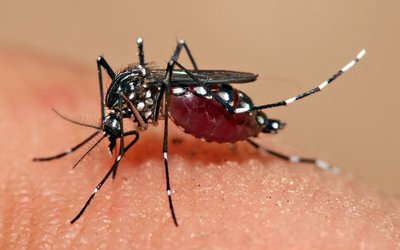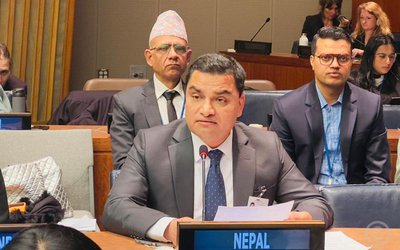If dengue fever was hard enough to pronounce correctly for us, now we have a more challenging name to try to pronounce. It is Legionnaires Disease ( LD). LD is the pneumonia that was recently reported in some patients from hospitals in Kathmandu. Luckily this problem may have tapered off as new cases have not apparently been reported.
LD is classically thought of as pneumonia that is picked up from water sources in the community or hospitals. The bacteria, Legionella, stays in water and also lives inside amebas (single cell organisms) that are found in water. In fact the ameba becomes something like a fort for the bacteria during hard times. The water sources most often implicated for harbouring Legionella are: shower sprays, air-conditioning, humidifiers in rooms, decorative fountains, respiratory therapy equipment and even roadside puddles which are plentiful in Nepal. Although proper chlorination of the water may help to fight off the bacteria, it can easily resist low levels of chlorine in the water.
The good news is that person- to- person transmission is not known to happen with this disease. This means that unlike many respiratory illnesses such as viral diseases and tuberculosis, it is not transmitted by droplet infection from one person to another. How this pneumonia derived its name is an interesting story.
In the summer of 1976 at the Bellevue-Stratford Hotel in Philadelphia, USA, the American Legion (organization of US war veterans) was holding its 58 th annual convention. In that hotel infection was presumed to be spread among these veterans attending the conference by contamination of the water in the hotel's air conditioning system. The presentation ranged from mild flulike symptoms to multisystem organ failure. Of the 182 people infected, 29 died. A more benign form of the illness is called Pontiac fever which presents without pneumonia. Although Legionella was not identified until 1976, this bacteria was found in a clinical specimen from 1943 and, many pneumonia outbreaks in different parts of the world that predate 1976 have been traced to this bacteria when archived specimens were examined.
Worldwide prevalence reports for Legionella have increased with time, likely due to doctors being aware of the disease and also the availability of better diagnostics. In countries such as Nepal it is probable that LD may now be more commonly detected here because of increased usage of air-conditioning and for other environmental and behavioral reasons.
The usual risk factors apply here too: old age, diabetes, chronic heart and lung disease, smoking, alcohol abuse, and patients on anti-cancer drugs. How can we tell if someone has LD? If someone has pneumonia, LD has to be in the differential diagnosis and the symptoms may be very mild to life threatening as was noted in the outbreak at meeting of the American Legion. Non-specific signs such as fever, cough, diarrhea, lethargy, and muscle pains are the first non- specific presentation of LD.
The microbiological diagnosis is hard to make in Nepal chiefly due to a lack of the availability of the tests. But it is true that even in countries where facilities are available, the diagnosis of LD is very often missed because the diagnosis is not entertained and tests are not done; but even where tests are available, the current tests may not be accurate enough. Sputum cultures where available can be done, but it may take time for the culture growth to take place. The simple antigen test in urine is what is most frequently used to make a diagnosis and start treatment with an antibiotic. Many of the commonly available antibiotics in Nepal such as azithromycin or the newer quinolones are usually effective against LD.
There is no vaccination against this pneumonia resulting from LD like there is for the more common pneumococcal pneumonia. Indeed all people over 65 are highly recommended to take the pneumococcal vaccine once in their lifetime. Luckily the pneumococcal vaccine is available in Nepal.

Buddha Basnyat MD
Buddha Basnyat, MD, MSc, FACP, FRCP, Director of the Oxford University Clinical Research Unit-Patan Academy of Health Sciences, Kathmandu.
- Altitude Sickness
- Feb 20, 2018
- Post-earthquake Nepal: The Way Forward
- Dec 13, 2015
- The Annapurna Sanctuary
- Nov 29, 2015
- Diarrhea at the Summit
- Nov 08, 2015
- Altitude Sickness ( AMS, HAPE, HACE)
- Oct 15, 2015














